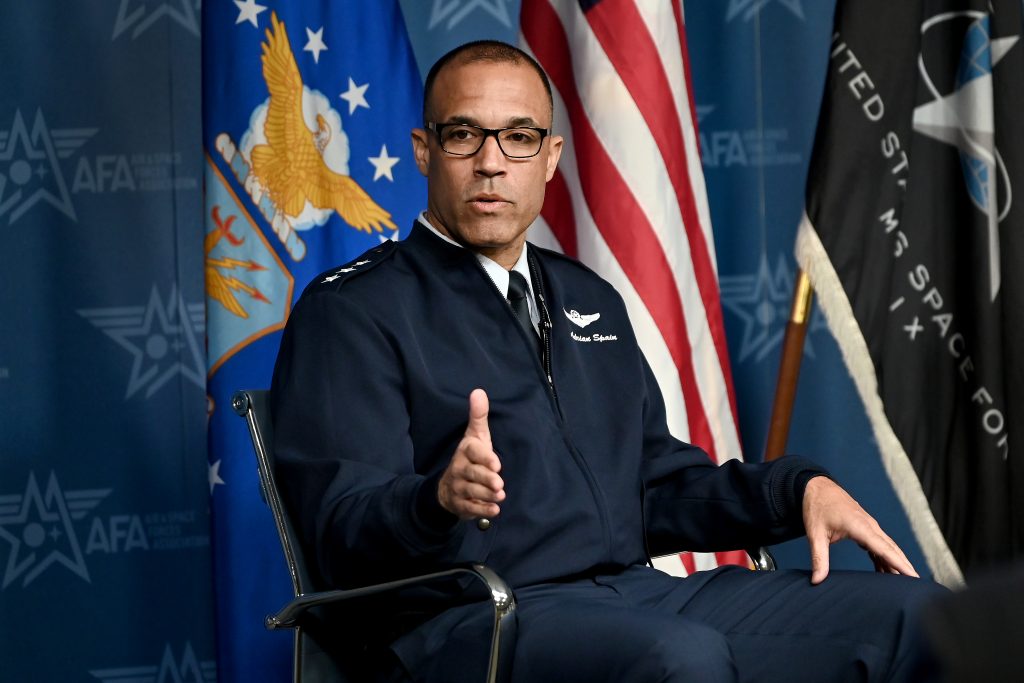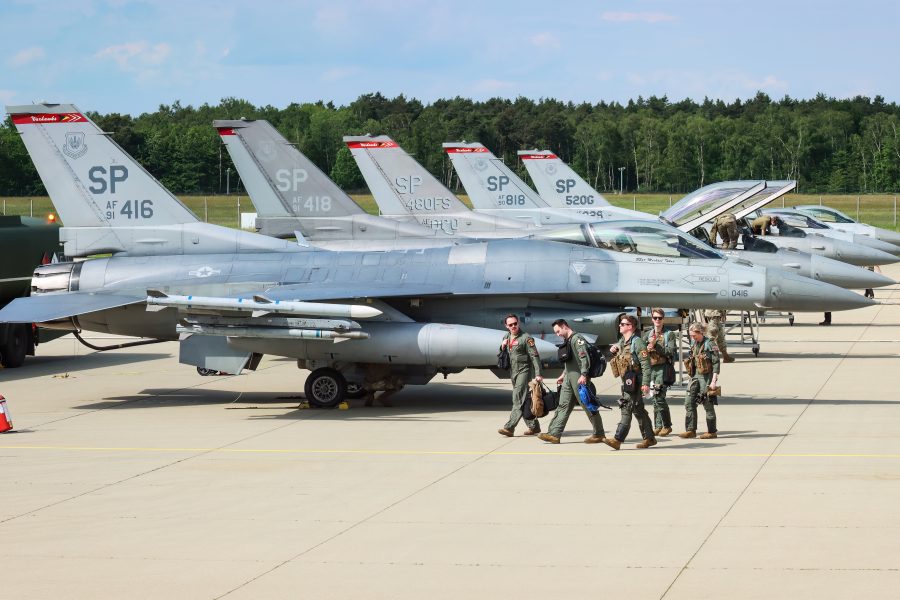The Air Force plans to field 24 Deployable Combat Wings to meet its rotational demands and provide a cushion for times of crisis, Lt. Gen. Adrian L. Spain, deputy chief of staff for operations, said June 18.
Combat Wings replace squadrons as the “units of action” that the Air Force presents to combatant commanders when forces are needed. Deployable Combat Wings will include command, sustainment, and mission layers, and can either pick up and deploy as an entire unit, or add or exchange mission elements depending on a combatant command’s needs at the time.
Getting to 24 DCWs won’t happen overnight. Chief of Staff Gen. David W. Allvin said June 14 that his staff is still developing the roadmap that will enable combat wings to be the operable deployable elements by late 2026.
“I think the number that we’re shooting for right now is 24,” Spain said. “We think 16 Active-Duty and eight from the Reserve components.”
How many the Air Force can field may not equate to need, however.
“The number that we can generate and the number that we need is absolutely what we’re talking about,” Spain said. “How many do we think we can actually generate with current resources? And how many do we need, not only to meet the current rotational requirements that we know we’re going to have or we’re likely to continue to have… but to give us some margin for combat credible and capable units of action beyond just the rotational part?”
Two dozen Deployable Combat Wings would allow the Air Force to maintain six wings each in the four phases of the Air Force force generation cycle: Prepare, Ready, Available to Commit, and Reset. Regular rotations would draw from the Available to Commit group, but in times of war, forces could be committed while in the ready, or “certified” phase, as well.
“You have a bench in the certified phase that you might want to take some risk on depending on what’s going on in the world and forward deploy them,” Spain said. “That would be in the worst case: an existential fight that’s coming up and we’re willing to take that risk. You wouldn’t do that for day-to-day operations. But you do have [a ready capability] and they’re three-quarters of the way through that cycle and largely prepared to go.”
Rotational demand and availability would not be spread equally among the Active and reserve components, however. Drawn from both the Air National Guard and Air Force Reserve, the eight reserve component DCWs will have different deploy-to-dwell ratios, meaning more time home between deployments, and they may not be quite as fully equipped to deploy on their own.
No deployable combat wing will deploy with “more than about four mission force elements,” Spain said. Typically, those elements have been equated with squadrons, and Spain said the reality is that in most cases a dozen aircraft would make up a force element for fighters.

Equipping those fully will be key to making units fully combat ready.
“Historically, in order to get to the deployable element, we kind of raided the follow-on force’s kit, in order to make sure the first 12 got out the door sufficiently,” Spain said. The Air Force would prefer not to have to do that, however, and this year’s unfunded priorities list included $612 million to bolster nine new elements, in the hope that Congress will buy out that deficit.
The exact makeup of the Deployable Combat Wings’ force elements may vary, but Spain said the wings will be designed to be modular enough that the command and support elements can take on other kinds of capabilities than whatever is their native force element.
“Where we are going to need to train the command echelon is to be able to receive forces of any type, because it’s probably going to be rare that the mission element that you have at your base is exactly what the crisis demands,” Spain said. “But I may need a command echelon and sustainment echelon … so they may go and the force elements may go either to a different place or not deployed at all, because I need F-16s versus F-22s at this time.”
